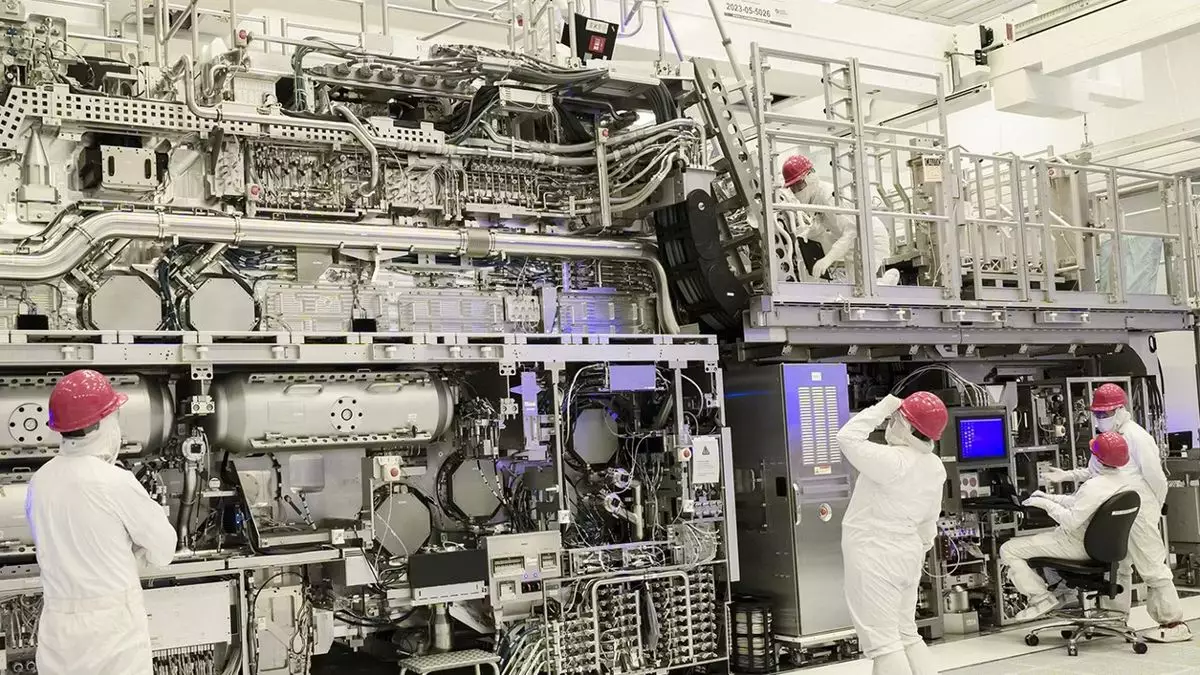As the semiconductor landscape evolves, the latest announcement surrounding Intel’s 18A chip technology has generated considerable attention. The newly launched page on Intel’s website touts that “Intel 18A is now ready,” which raises significant questions about the true readiness and implications of this latest chip production node. Given the backdrop of Intel’s tumultuous journey through recent technology transitions, it is crucial to delve into what this means for the future of PC architecture and Intel’s competitive positioning.
The advancement to the 18A node represents the culmination of Intel’s ambitious five-node strategy referred to as “5N4Y,” which commenced with Intel 7 technology. This roadmap was originally conceived as a way for Intel to regain its ground in the competitive semiconductor industry while addressing challenges presented by rival foundries like TSMC. However, the actual execution has not been without scrutiny. Intel 7 was merely a tweaked version of its long-struggling 10nm technology, while subsequent nodes like Intel 4 featured only moderately new advancements. As we transition to Intel 18A, it begs the question of whether this leap will truly materialize into a competitive advantage, especially as notable delays have already plagued projects linked to earlier nodes.
According to Intel’s claims, the 18A technology boasts several enhancements such as up to 15% improvement in performance per watt and a 30% increase in chip density compared to the preceding Intel 3 node. These figures, while promising, have to be taken with a grain of salt given Intel’s historical track record. Furthermore, while 18A is allegedly the first sub-2nm process node to emerge from North American soil, the question remains whether its performance can indeed rival the offerings of TSMC, particularly with its upcoming N2 production node.
A standout feature of Intel 18A is its integration of PowerVia backside-power delivery technology, which aims to enhance efficiency by relocating power interconnects. This novel approach is designed to help mitigate issues related to power delivery and improve overall performance. However, its efficacy remains to be seen in practical applications. As with any paradigm shift in technology, tangible evidence of these enhancements in real-world scenarios will be paramount in determining 18A’s ultimate success.
Intel’s current marketing strategy appears less focused on convincing consumers of the merits of 18A regarding its products but aims primarily at attracting potential clients for its foundry services. The chip giant has signaled that customer projects are anticipated to initiate by the first half of 2025, yet several internal timelines, including the launch of the Clearwater Forest server CPU, have been pushed back into 2026. Such delays can fuel skepticism regarding Intel’s confidence in the 18A technology, especially when viewed through the lens of its competitive relations with TSMC and other chip manufacturers.
It is interesting to note that the disparity in delivery schedules is not merely a trivial concern; it can engender increased costs for consumers if Intel fails to keep pace. As Intel grapples with internal production timelines, the broader implications rest heavily on how these nodes translate into end-user products. After all, prolonged delays tend to raise overheads, with customers ultimately bearing the burden of increased pricing.
Intel’s CEO Pat Gelsinger has publicly declared that the company’s future effectively rides on the success of 18A. This assertion underscores the high stakes involved, where the sluggish transition to newer nodes can have far-reaching repercussions for Intel. As such, the firm’s ability to deliver tangible results on time will define its reputation and viability in the semiconductor space. Despite promising advancements, one cannot help but question the intrinsic readiness of the 18A technology, given prevailing hesitations.
Moreover, there are broader implications to consider as the semiconductor industry witnesses surging demand amid an ongoing tech arms race. With an increasingly diverse set of applications from artificial intelligence to high-performance computing, Intel can’t afford to slip through the cracks. The company will need to enhance stakeholder trust and customer confidence—an uphill battle that goes beyond mere technological promises.
While Intel’s 18A node represents a critical pivot towards technological advancement, the path ahead is fraught with uncertainty and skepticism. Drawing upon previous experiences, Intel must navigate the complex dynamics of production timing, competitive pressures, and market expectations effectively. Should the company succeed in realizing its ambitious claims, the potential to reshape not only its future but the overall landscape of the semiconductor industry could be significant. Still, the margin for error narrows, and as the chips continue to fall, all eyes will remain trained on Intel’s execution in the coming years.

